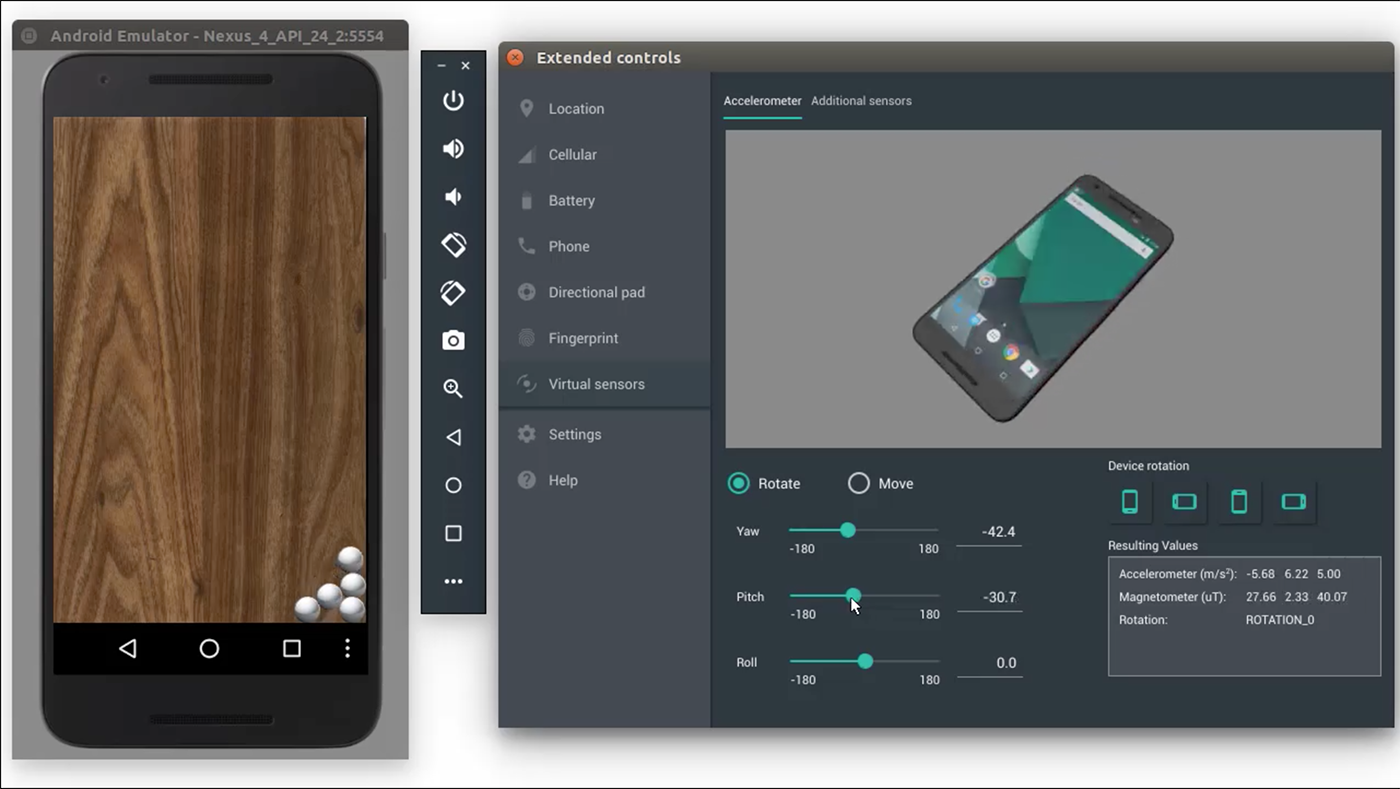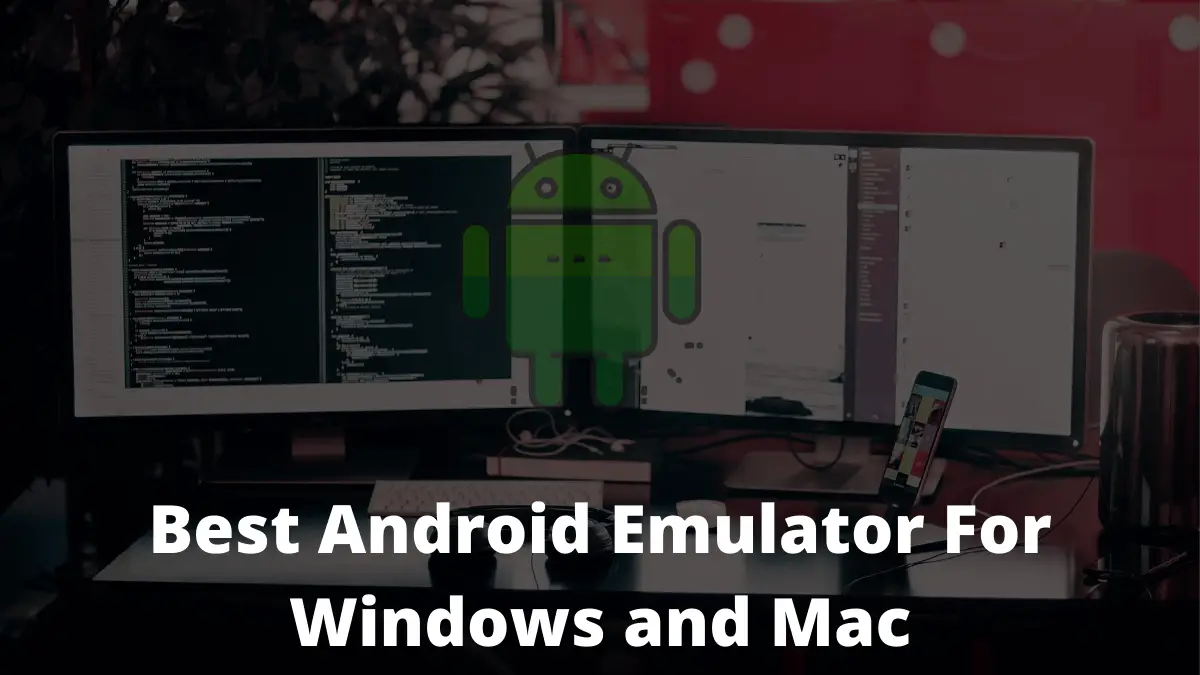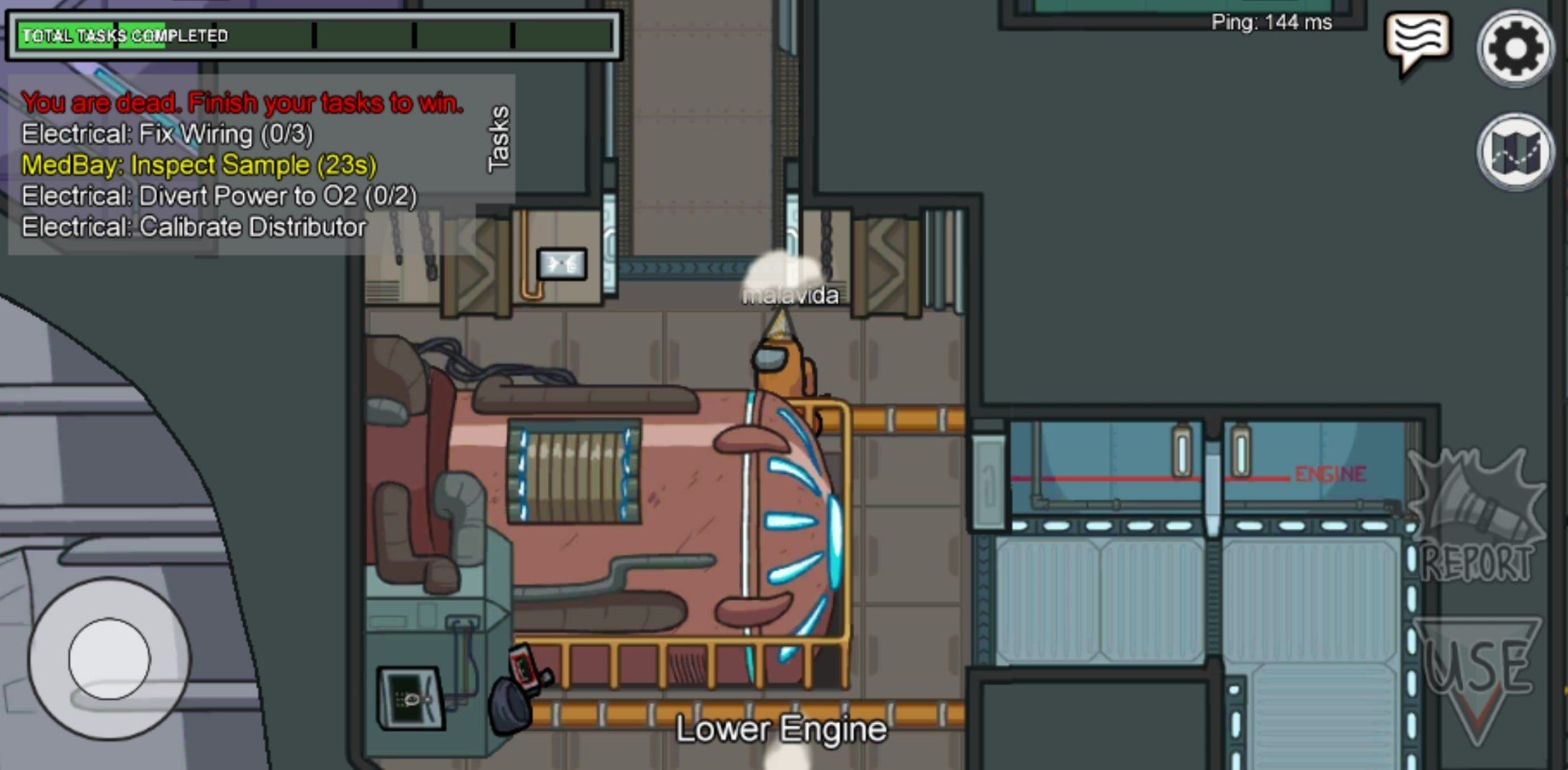The purpose of this section is to guide you to create in your development environment an Android emulator.
Android Emulator For Mac Os X Yosemite The emulator suite also allows installed Android applications to use hardware like microphones and cameras if required. In addition, with applications that require strong graphics capabilities, BlueStacks can also respond by optimizing hardware on Mac computers.
Android emulators are managed through a UI called AVD Manager
- What you need to do is install an Android emulator for the PC. There are many Android emulators for computers. The problem is that some of them can be a bit heavy and may not work as well if your PC is not very powerful. In any of the cases, here we make a list of the best 11 Android emulators for low-resource computers in 2020.
- On Mac OS X v10.10 Yosemite and higher, the Android Emulator uses the built-in Hypervisor.Framework by default, and falls back to using Intel HAXM if Hypervisor.Framework fails to initialize. To use VM acceleration on macOS when the Hypervisor.Framework is not available, you must install the Intel HAXM kernel extension.
AVD Manager has a nice interface when started from Android Studio.
Start Android Studio app, then create a blank project.

Go to the Tools menu -> :Android -> AVD Manager:
If no emulator has been created you should start with this screen:
Click the Create Virtual Device button.
In the Select Hardware window , select Nexus 5 as shown in the following snapshot:
Click the Next button.
In the System Image, select the system image Nougat, API Level 25 , ABI x86 :
Click on the download link to download the selected System Image. This download process is done through SDK Manager.
Once the download is complete, click on the Next button.
In the Verify Configuration window, check any parameter :
Then click on the Finish button.
AVD Manager shows you the newly created device:
Click on the launch button to launch the newly created AVD in the emulator.
Notice in the Run Window of Android Studio the command line used to start the device:
which can be shortened to :
How to start Android Emulator from Terminal?
Stop the emulator started by Android Studio. Open the Terminal app and type the following command:
This should start the emulator with the selected AVD.
References
- Mac® OS X® 10.10 (Yosemite) or higher, up to 10.14 (macOS Mojave) 4 GB RAM minimum, 8 GB RAM recommended 2 GB of available disk space minimum, 4 GB Recommended (500 MB for IDE + 1.5 GB for Android SDK and emulator system image) 1280 x 800 minimum screen.
- KOPLAYER for Mac OS X is the best free Android emulator in the world at present. KOPLAYER commits itself to bring best playing experience for players with more than one million hot apps. Not an alternative? Report a problem.
- Setup Android Emulator on Mac OS X. The purpose of this section is to guide you to create in your development environment an Android emulator. Android emulators are managed through a UI called AVD Manager. AVD Manager has a nice interface when started from Android Studio. Start Android Studio app, then create a blank project.
- Free Xamarin Mac OS X 10.10/10.11 Version 0.6.5 Full Specs. Xamarin Android Player is significantly faster than the stock Android Emulator. Xamarin Android Player runs with Visual.
This page lists known issues, workarounds, and troubleshooting tips for theAndroid Emulator.
If you encounter an issue not listed here or are unable to successfully use aworkaround listed here, please report a bug.
BlueStacks App Player. Well, BlueStack is one of the leading Android emulators available for.
Checking for adequate disk space
To avoid crashes and hangs caused by not having enough free disk space, theemulator checks for sufficient free disk space on startup, and will not startunless at least 2 GB is free. If the emulator fails to start for you, check tosee that you have adequate free disk space.
Antivirus software

Download Android Emulator For Mac
Because many security and antivirus software packages work by monitoring everyread and write operation, use of such software can decrease performance of toolslike the Android Emulator.
Many antivirus packages provide the ability to add specific applications to alist of trusted applications, which enables these applications to operatewithout performance degradation. If you are experiencing poor performance withsaving or loading of AVD snapshots, you may improve this performance by addingthe Android Emulator application as a trusted application in your antivirussoftware.
The performance impact differs between various antivirus software packages. Ifyou have additional antivirus software installed beyond that which is includedwith your operating system, you can run simple tests to determine whichantivirus software has a greater performance effect on emulator load and saveoperations.
Some antivirus software may be incompatible with the Android Emulator.
If you're using Avast software and are having trouble running the AndroidEmulator, try disabling Use nested virtualization when availableand Enable Hardware assisted virtualization in the Avast Troubleshootingsettings. In addition, after Avast hardware virtualization is disabled, ensurethat HAXM is set up properly again with a full re-installation of the latest HAXMfrom the SDK Manager.

HAXM on older, unsupported versions of Mac OS
If you are using Android Emulator on older, unsupported versions of Mac OS X(such as 10.9), then you may need to use an older version of HAXM (6.1.2), too.
Android Emulator runs slowly after an update

A number of external factors can cause the Android Emulator to begin runningslowly after an update. To begin troubleshooting, we recommend thefollowing steps: Icons for imac.
- If you are running Android Emulator on Windows, check to see if you haveinstalled Windows UpdatesKB4013429andKB4015217.Some users reported improved Android Emulator performance after uninstallingthese updates. Users also reported improved Emulator performance afterinstalling Windows UpdateKB4015438.
- If you have an Intel GPU (and in particular, the Intel HD 4000), ensure youhave downloaded and installed the latest Intel graphics driver.
- If your machine has both an Intel HD 4000 GPU and a discrete GPU,disable the Intel HD 4000 GPU in Device Manager to ensure you areusing the discrete GPU.
- Try running the emulator using the
-gpu angle,-gpu swiftshader, or-gpu guestmodes. For more information about configuring graphicsacceleration options on the command line, seeConfigure hardware acceleration. - Ensure that your router is not using IPv6 addresses if you do not have anIPv6 connection.
If you are still experiencing problems with the Android Emulator runningslowly, Report a bug, including thenecessary Android Emulator Details so we can investigate.
Windows: Free RAM and commit charge
When the emulator starts, it needs to initialize the Android guest operatingsystem's RAM. On Windows, the emulator asks Windows to account for the fullsize of guest memory at start time, even though during actual operation, thememory may be paged in on demand. The emulator requests the full amount of guestmemory at start time because Windows is conservative in ensuring that there isenough physical RAM and pagefile available to hold the entire potential workingset; this prepares for the worst case, in which all guest memory is touchedquickly, without any opportunity to discard or otherwise free memory.
Sometimes, when the emulator asks Windows to account for this full guest memorysize, the request exceeds the current commit limit, which is the total of theavailable physical RAM and pagefile. In this case, Windows can't guarantee thatthe worst-case working set will fit in either physical RAM or pagefile, and theemulator fails to start.
In typical cases, the amount of hard drive space allocated for the pagefile plusphysical RAM is more than enough for most use cases of the emulator. However, ifyou experience failures to start the emulator because of exceeding the commitlimit, we recommend examining the current commit charge, which can be seen inthe Performance tab in the Windows Task Manager. (To open the Task Manager,press Ctrl+Shift+Esc.)
You can lower the likelihood of exceeding the commit limit in various ways:
- Free physical RAM before launching the emulator by closing unused applicationsand files.
- Disable third-party memory management and memory compression utilities. Theseutilities can inefficiently cause an excess commit charge and bring yoursystem closer to the commit limit.
Use a system managed size for the Windows pagefile, which can more flexiblyand dynamically increase the pagefile size (and therefore the commit limit) inresponse to increased demand from the emulator and other applications.
For more information on commit charges and why a flexible setting works best,see this Microsoft article.
Nox App Player For Mac is the name for the Android emulator which has become extremely popular these days. An emulator is a computer application that simulates the entire Android ecosystem onto a computer such as Mac or Windows. It also lets you access all the Android applications. The users love it as they can access the apps on computer and interact with them using mouse and keyboard. Developers love emulators as it allows them to test their app on a computer.
Os X Android Emulator Pc
Nox App Player is built upon Android KitKat and Jellybean. It has built-in support for Google Play Store, allowing you to access any official app you want. You may also install third-party apps using APK files or the third-party app stores. In this article we will learn how to install Nox Player for Mac. Keep reading!
How to Download & Install Nox App Player For Mac
I am excited to share this guide with you that will help you get Nox for Mac. You will find that installing Nox App Player for Mac is incredibly easy and straightforward.
Without any further ado, let’s jump into the installation process.
Download Nox App Player For Mac
To get this emulator you will need to download Nox for Mac installer file first. It is the file with the DMG extension. Here is how you can download it:
- Open any web browser on your Mac computer and visit the following link
- Locate the Download button and click on it
Download Mac Version
- If you see any prompt, hit the appropriate button to continue with the installation
- Save the file at the desired location (it may also go to the default download location)
Mac Os Android Emulator Slow
Install Nox Player 6 on Mac
Now you can install Nox Emulator for Mac using the DMG installer file we downloaded. On some computers the installation process starts right after downloading the file. In some cases, it does not. So, here is the manual process:
- Go to the location where you have downloaded the DMG file
- Double click the file to run it and to start the installation
- Grant all the required permission so that you may proceed with the installation process
- Agree to the terms of service and follow the onscreen instructions to complete the installation process
Within a few minutes you will have Nox Player for Mac installed and ready for use.
Please note that you will need to sign in with your Google ID to use Nox.
Android Emulator For Mac Os X Download
CONCLUSION
Nox App Download
Free Android Emulator On Pc And Mac Download Non Player
Android Emulator For Os X
If you want to access the Android applications on your Mac computer, Nox for Mac is the best option. You may have heard of BlueStacks as well and if you have used it, you may have noticed it is slow. Nox is better performing and smoothly runs all the apps on your computer. Using the above steps, you can easily complete the Nox for Mac download and installation. You can then sign in to it using Google ID and enjoy all your favorite Android apps on the bigger screen.